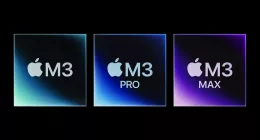While we’ve already been greeted with the flagship devices of most technology behemoths, the one device that’s still creating immense buzz and excitement is the next iPhone – the iPhone 8. The intensity of the same has sent all the other hardware giants into a frenzy and they’ve started adopting preventive measures to steer clear of any component shortages.
According to a fresh report from Reuters, hardware manufacturers from across the globe are scrambling to hoard memory chips as Apple will surely be given a priority for the launch of the iPhone 8, scheduled for later in September. This is expected to further squeeze the life out of the market, which is plagued with an already shortened supply of chips.
It has been further rightly been mentioned that chip manufacturing procedures are steadily becoming more complex, time and capital consuming. As we add in more number of chips on a smaller surface, it raises investment cost yet making for less output growth – as the chipmakers struggle for better yields. It has even resulted in prices of the chips to double or triple over the past couple of years.
This shortage may prove to be detrimental for small-time hardware makers who may have either have to cut down on production or reduce the amount of DRAM they include in their devices or adopt a channel similar to what everybody else is presently trying to follow – shell out more money, pay a premium to secure even longer contracts.
Sources aware of the scenario have told the publication that several hardware makers have already ‘moved to 6-month supply agreements’ instead of the usual quarterly or monthly deals. Some are even trying to put chip order way earlier than they actually require these chips to maintain their inventory and keep the production line running.
Big-time players such as Apple (who has prominent partners in place) and Samsung (who manufactures these chips itself) would most likely not be plagued with this shortage – or maybe only a little. One of the sources aware of the developments in the chip industry goes on to comment on Cupertino’s position, calling it a critical source of demand for the NAND chips in the present scenario. It further adds,
The problem will be more acute for the NAND market, where the iPhone remains a critical source of demand given the huge sales volumes and recent moves to increase storage capacity on the device.
Being called the iPhone 8, this special tenth-anniversary device will be a notable overhaul over any of the previous-gen devices. The device is expected to witness Apple move away from Retina displays and integrate OLED screens, packed with its True Tone technology, into its new and upgraded lineup. The Cupertino giant is planning to integrate a 5.8-inch edge-to-edge display into the iPhone 8 using a form factor similar to its current lineup.
There are also rumors that Apple is currently trying to integrate Touch ID sensor under the display but the response isn’t as smooth as expected. It is also finally gearing up to talk about AR (augmented reality) software features that would be implemented by their dual-lens vertical camera setup that’ll be debuted with the iPhone 8. Cupertino has already shown off its AR Kit developer suite and feature set that’s been integrated into the latest iOS 11 iteration.





